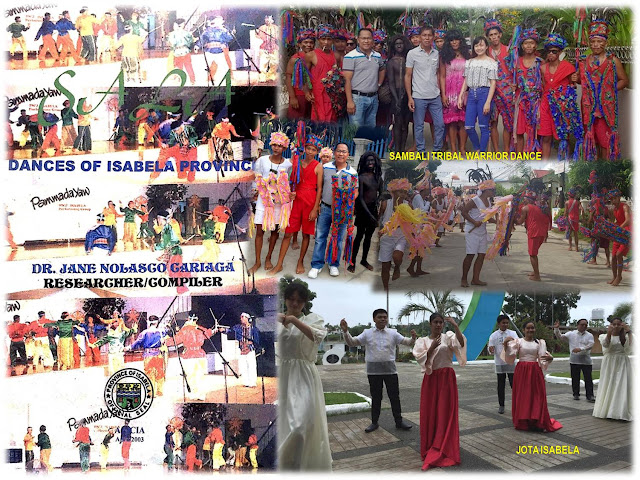110. BAMBANTI FESTIVAL IN NUEVA VIZCAYA
BAMBANTI
FESTIVAL IN NUEVA VIZCAYA
Dr. Troy Alexander G. Miano
12 February 2020
12 February 2020
The Provincial Government
of Nueva Vizcaya led by Governor Carlos M. Padilla requested the Province of
Isabela to share its best practices in culture and the arts particularly the
multi-awarded Bambanti Festival. I was instructed by the Governor through the
Provincial Administrator to represent the province during the 1st
Nueva Vizcaya Culture and Arts Summit held at the FTM Food Fiesta in the
capital town of Bayombong, Nueva Vizcaya.
The one-day forum
discussed the challenges, goals and outcomes for the culture and arts sector of
the province. The other invited speakers were former Nueva Vizcaya Governor
Ruth Raña-Padilla who is the incumbent vice chair for culture and arts of the
Cagayan Valley Regional Tourism Council (CVRTC). Her topic was “Culture and
Arts in Governance. The third speaker was Mr. Ramon Jerry Cabalce, the chairman
of the CVRTC for the term 2019-2022 and his topic was “Linking LGUs and Tourism
Stakeholders Through Culture”. Sangguniang Panlalawigan Member, Hon. Eunice
Galima-Gambol, SP Committee Chair on Tourism, Culture & Arts, represented
the Governor and gave the welcome remarks. The participants were Tourism &
Cultural Officers and Designates of the 15 LGUs and their respective
Sangguniang Bayan Members Committee on Tourism, Culture and Arts Chair;
cultural warriors from the academe; and other culture and the arts enthusiasts
both in the public and private sectors. Ms. Marichelle O. Costales, my
counterpart in Nueva Vizcaya, managed the whole day historic affair.
One of the highlights
of the summit was the awarding of recognition, through a provincial resolution,
to Mr. Adolfo and his wife Mrs. Sublina Quewigh of the Municipality of Alfonso
Castañeda. The Bugkalot (Ilongot) couple of Barangay Pelaway are cultural bearers
and traditional folk artists for more than half a century. The “katutubong
manlilikha” consistently performed or produced over a significant period, works
of superior quality and distinctive quality, possesses mastery of the tools and
materials needed by the art and both had an established reputation in the arts
as masters and makers of extraordinary technical quality.
The Isabela Tourism
Office prepared a one-hour powerpoint presentation narrating the evolution of
the tourism office of Isabela and how the Bambanti was born, institutionalized
and eventually became multi-awarded. My talk was supported with five videos
containing the Bambanti 2015 movie teaser by Zig M. Dulay, Bambanti Village,
Bambanti street dance and showdown and the awarding of the Guinness World
Record. The presentation was highlighted with the enumeration of the seven
Bambanti awards which includes: Aliw Awards for Best Festival Performance and
Practices (2015, 2016 & 2017), Aliw Hall of Fame Award (2018), Guinness
Record for the “Largest Gathering of People Dressed as Scarecrows” - 2,495
Isabeleños (2019), ATOP-DOT Pearl Award Grand Winner for Best Tourism Event -
Festival as Thanksgiving for a Bountiful Harvest (2019), and Philippine LEAF
(Live Entertainment Arts and Festival) Award for Most Outstanding Agricultural
Festival (2020). I also underscored that the festival is one of the best practices
incorporated in the annual Seal of Good Local Governance – Tourism, Culture and
Arts entry and documentation for five consecutive years (2015-2019).
The province of Nueva
Vizcaya is 17 years older than the province of Isabela. More than half of what
is now Isabela belongs to the territorial jurisdiction of Nueva Vizcaya from
1839 to 1856. The present-day Ifugao, Mt. Province, Quirino and much of Aurora
province were also part of old Spanish Nueva Vizcaya. During this period, the
capital of the whole province was stationed at Pueblo Camarag, now a barangay
of the Municipality of San Isidro, Isabela. Vestiges of the old San Jose de Camarag
Church can still be found in this old settlement near the Ganano River. Camarag
was a one-time home of Nueva Vizcaya Military Governor Mariano Oscariz, the
Conqueror of the Ifugaos. After the creation of Isabela province on May 1,
1856, Nueva Vizcaya’s capital was permanently assigned in the old town of
Bayombong.
Nueva Vizcaya was
created on May 24, 1839 and its territory comprised all towns from Ilagan to Aritao in Caraballo del Sur including the visita
of Palanan (then a part of Nueva Ecija province) and Catalangan (in the Sierra
Madre now the area of San Mariano town in Isabela). However, the creation was approved
by a Royal Order only in April 10, 1841.
The term “nueva” means “new” while “Vizcaya” refers to the
province of Vizcaya (spelled Bizkaia in
the Basque language) in northern Spain. “Bizkaia” means “mountainous”. The
terrain of Vizcaya in the Basque region in Spain is very similar to the
geography of Nueva Vizcaya. Surrounded by Northern Luzon's three large
mountain ranges, Nueva Vizcaya is bordered on the west by the Cordillera mountains, on the east by
the Sierra Madre mountains, and on the south by
the Caraballo
Mountains. Aside
from having a similar topography, the naming of the new province was influenced
by the incumbent Governor-General (1838-1841) Luis Lardizabal y Montojo who was
from Basque country in Spain. The right part of the present official seal of
Nueva Vizcaya province still bears representation of the heraldic of Vizcaya,
Spain.
The territories of
Nueva Vizcaya were greatly reduced as a result of the creation of the province
of Isabela (1856), Ifugao (1908) and Quirino (1971). It now has a total land area of 3,975.67 square kilometers.
Nueva Vizcaya comprises
15 municipalities and is the
home to about 18 indigenous peoples, which includes the major tribes of Ifugao,
Gaddang, Isinay, Dumagat, Kalanguya, and Bugkalot. Every last week of May,
these ethnolinguistic groups gather to celebrate
the Ammungan festival (formerly Panagyaman festival), a
week-long festivity culminating on May 24, the province' foundation day.
Nueva Vizcaya’s
Ammungan (Gathering) Festival and Isabela’s Bambanti (Scarecrow) Festival both
aims to promote culture, tradition and its agricultural products.
Inter-province cooperation will result to a synergism which would eventually lead
to a successful promotion of tourism in the valley.




Mga Komento
Mag-post ng isang Komento